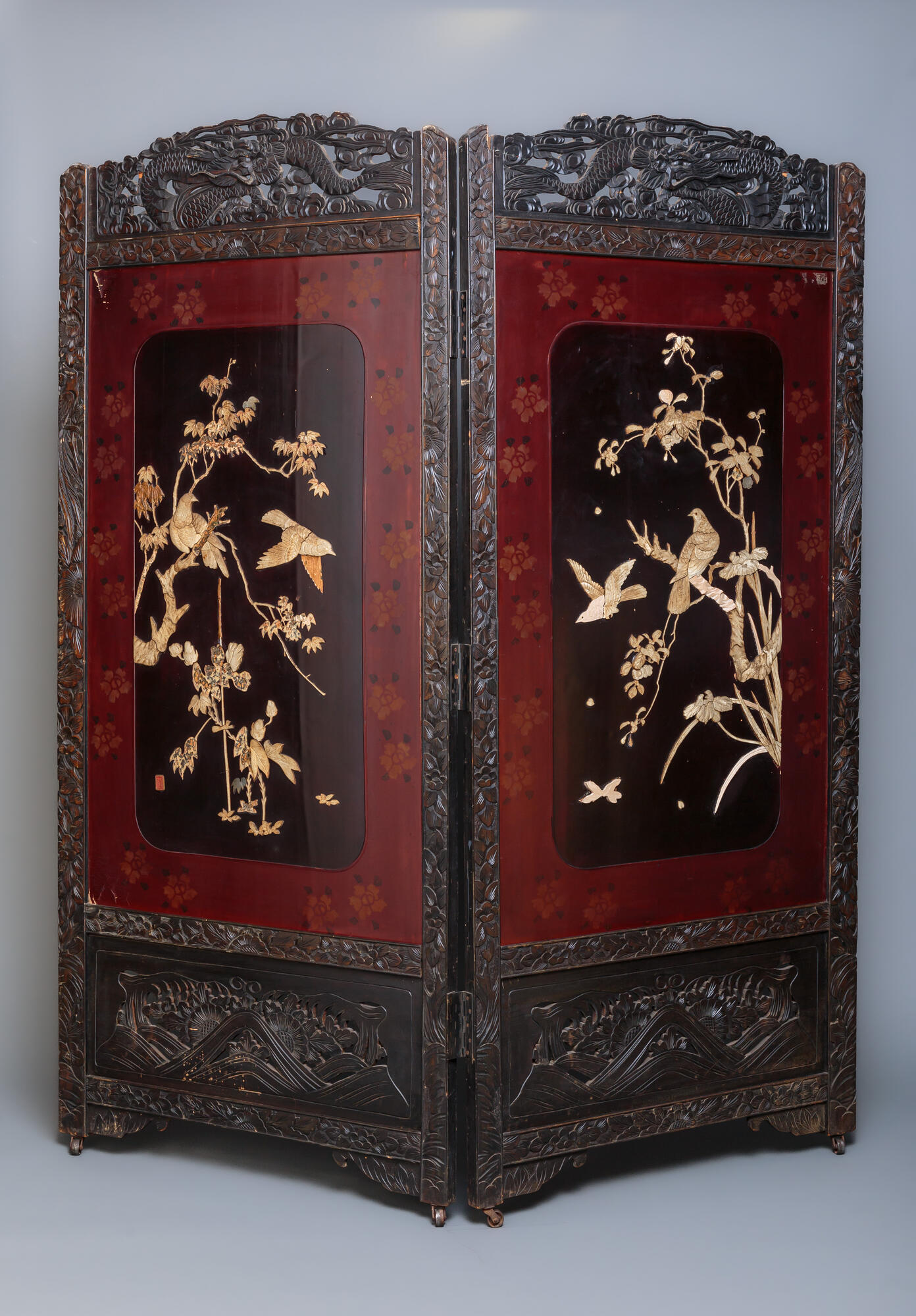Folding screens are small, portable partitions used to divide up space or to separate an “intimate” part of a room for changing or storing things. They were invented in China around the second century BC and were called “fui” or “penphen”, meaning a “movable wall”.
The oldest examples were made of mica and glass, while jasper and metal elements were used for decoration. Later partitions were bamboo or wooden frames, covered on both sides with painted or embroidered silk, brocade or sturdy paper. Painted panels inlaid with mother-of-pearl, shells and multicolored stones, partitions made of leather and cloth, and some were entirely wooden. Craftsmen depicted fantastic flowers and birds, less often landscapes and everyday scenes, and wrote aphorisms on the panels. All this was done in compliance with the traditional canon and had an implicit meaning.
By the 7th century the number of panels could reach forty or even more, but the most popular were six- or eight-panel items, from the miniature table-top to the large interior ones.
From China folding screens came to Japan, where they were called “kite”. They became an integral part of interiors, including those of the palace. Unlike the Chinese fui, kite were decorated on both sides and were rarely made longer than six panels. Japanese artisans favored narrative drawings, which were supposed to be viewed from right to left and from bottom to top. The miniature technique used to decorate the screens combined elements of Chinese ink painting and Japanese color painting.
Noble houses had several screens, which were displayed at different times of the year, on certain holidays or depending on the status of expected guests.
Around the 17th century, thanks to travelers, this element of the interior came to Europe and got its familiar name: the screen (from the German word “Schirm” meaning “barrier”). At first it was an imported product: the most prized were Chinese Coromandel lacquered screens with fretted decoration and the Japanese ones made of wood and thick paper.
Over time, Europeans began to create their own “oriental” stylizations. In the 18th century, at the peak of the mass enthusiasm for Chinese chinoiserie (from French chinois meaning Chinese), the production of screens reached its heyday. You could find screens in any aristocratic home and their appearance varied depending on the prevailing style: Rococo, Empire, Art Nouveau and others.
The oldest examples were made of mica and glass, while jasper and metal elements were used for decoration. Later partitions were bamboo or wooden frames, covered on both sides with painted or embroidered silk, brocade or sturdy paper. Painted panels inlaid with mother-of-pearl, shells and multicolored stones, partitions made of leather and cloth, and some were entirely wooden. Craftsmen depicted fantastic flowers and birds, less often landscapes and everyday scenes, and wrote aphorisms on the panels. All this was done in compliance with the traditional canon and had an implicit meaning.
By the 7th century the number of panels could reach forty or even more, but the most popular were six- or eight-panel items, from the miniature table-top to the large interior ones.
From China folding screens came to Japan, where they were called “kite”. They became an integral part of interiors, including those of the palace. Unlike the Chinese fui, kite were decorated on both sides and were rarely made longer than six panels. Japanese artisans favored narrative drawings, which were supposed to be viewed from right to left and from bottom to top. The miniature technique used to decorate the screens combined elements of Chinese ink painting and Japanese color painting.
Noble houses had several screens, which were displayed at different times of the year, on certain holidays or depending on the status of expected guests.
Around the 17th century, thanks to travelers, this element of the interior came to Europe and got its familiar name: the screen (from the German word “Schirm” meaning “barrier”). At first it was an imported product: the most prized were Chinese Coromandel lacquered screens with fretted decoration and the Japanese ones made of wood and thick paper.
Over time, Europeans began to create their own “oriental” stylizations. In the 18th century, at the peak of the mass enthusiasm for Chinese chinoiserie (from French chinois meaning Chinese), the production of screens reached its heyday. You could find screens in any aristocratic home and their appearance varied depending on the prevailing style: Rococo, Empire, Art Nouveau and others.




